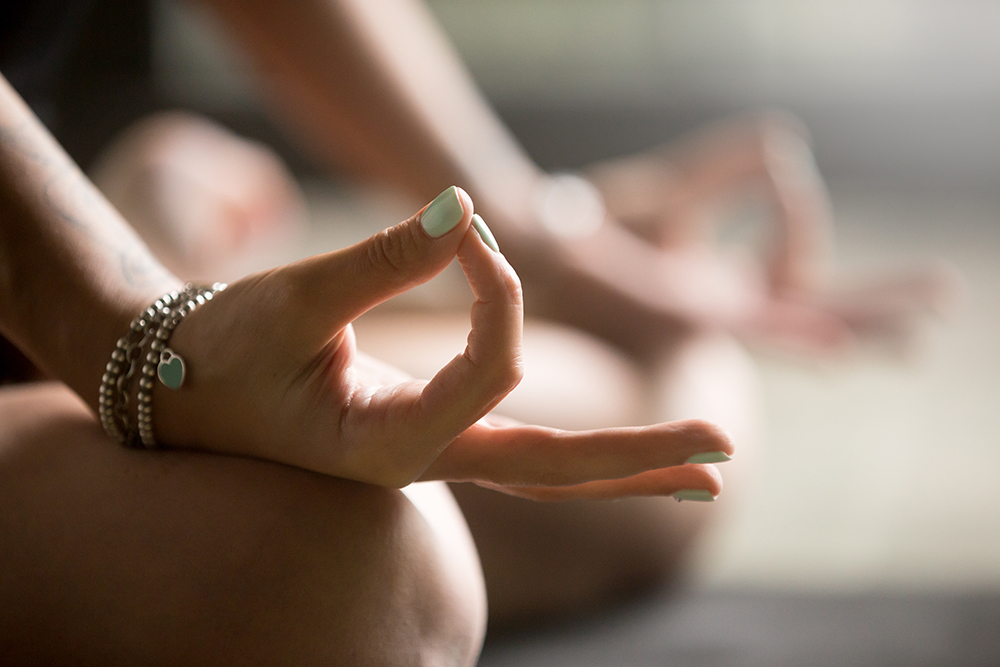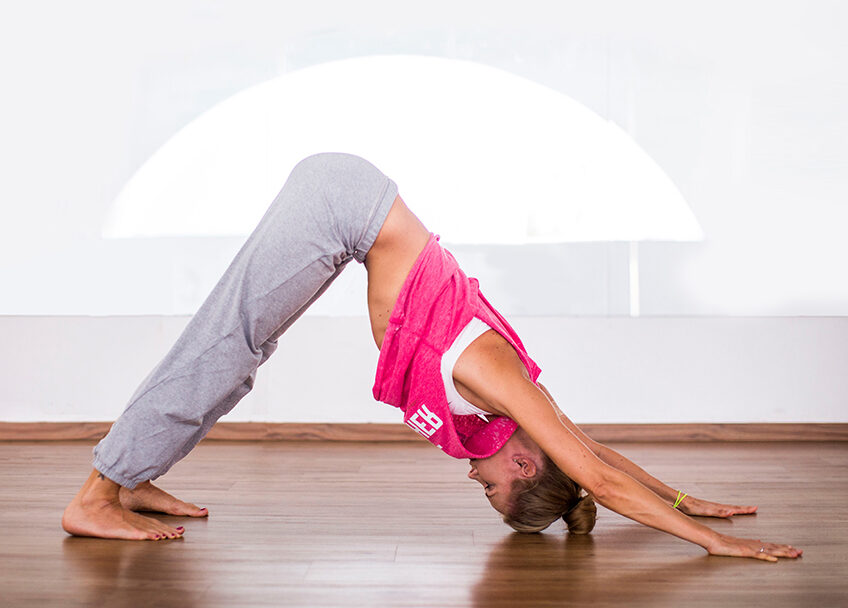What is the meaning of Ujjayi?
Ud means expanding
Java means success
Ujjayi Breath is also known as the
Victorious Breath, Psychic Breath, Hissing Breath or the „Ocean Sounding“ Breath.
Ujjayi Pranayama is not belly breathing – it is a controlled, rhythmic & thoracic breath.
Why creating a soft hissing sound and where is this “ah” sound coming from?
The Ujjayi sound is made by toning the throat and epiglottis – the vocal diaphragm – as if you were whispering the sound of ‚haaaa‘ in the throat – a breathy sound like the one made when you fog a mirror with your breath. The purpose of this is to tune you into the sound and sensation of the breath, putting you in immediate touch with the quality and texture of your breath.
What happens with the air flow?
There is a slight contraction in your throat while breathing in Ujjayi because of that we are refining and slowing down the breath. We are narrowing the channel, not so much air can pass through and this is creating the hissing sound. When for example wind passes through a narrow passage it also creates a slight sound.
Where does the contraction takes place?
The area at the back of the throat is lightly contracted as you do when you swallow or when you are whispering.
Effects of Ujjayi Breath
- makes the breath more even and steady
- slows the breath down and refines the breath
- calms the mind and the body
- generates internal heat in the body
- increases concentration
- increases sense
- stimulates circulation and metabolism
- creates length in the spine
What are the precautions?
- if you have low blood pressure then this pranayama technique can bring it further down
- you may feel little warm or tingling sensation in the throat because of friction but this is normal
- under no circumstances the proportion of the breathing should be forced
- if you feel dizzy then please stop the practice and continue normal breathing
When to perform Ujjayi Breath?
- during asana practice
- before meditation
- when you want to get concentrated
This technique can be practised almost any time and in any position
(standing, sitting or lying).
How to create the “ah” sound?
To help create the proper „ah“ sound, hold your hand up to your mouth.
Let‘s imagine the hand is your mirror and you want to clean the mirror.
- Exhale through the mouth as if you are trying to fog the mirror.
Notice how you contract the back of the throat to create the fog effect. - Try the same on the in breath (mouth open).
- Now try on the in and out breath (mouth open).
- Now go one step further. Close your mouth and do the same thing while breathing through the nose.
Why breathing through the nose?
In most pranayama techniques we have our mouth closed because the air gets cleaned by the nostrils. So in Ujjayi we have the mouth closed and we only inhale & exhale through the nose. This warms and filters the air, and further allows you to delicately regulate the breath, making it smooth and even to produce a calming and relaxing effect that ultimately draws you into meditation. In more esoteric terms, the Ujjayi breath enhances your ability to assimilate the prana from the air, generating greater pranic energy within your body. With a subtle, relaxed practice of Ujjayi breath you can feel soothing currents of energy moving through your head, along your spine and throughout your body. During practising Ujjayi the tip of the tongue is touching the roof of the mouth (Nabho Mudra).
How to practice Ujjayi Breath?
- Check your seated position. Upright, steady and comfortable. Rest your hands on your knees in chin mudra and close your eyes. Press your sit bones into the ground. Tuck your tail bone slightly under but still feel your natural curve in your lumbar spine. Your navel is gently moving in and up. Elongate your spine from the tailbone to the crown of your head. Keep the center of the chest lifted and allow your shoulders to roll back and down away from the ears. Find also a lengthening through the back of the neck as you slightly tilt the tip of the nose down towards your brestbone. Lifting from the crown of your head. Relax all the muscles in your face.
- Tip of our tongue is touching the roof of the mouth (Nabho Mudra). That gives you a lift and is lengthening your spine.
- Begin taking long, slow and deep inhalations and exhalations through the nostrils.
- Allow the breath to be gentle and relaxed as you slightly contract the back of your throat creating a steady hissing sound as you breathe in and out. The sound need not be forced, but it should be loud enough so that your neighbour can hear it.
- Lengthen the inhalation and the exhalation as much as possible without creating tension anywhere in your body, and allow the sound of the breath to be continuous and smooth. Imagine when you inhale that the breath goes all the way down and as you exhale the breath goes all the way up.
- Inhale on the count of 4 and exhale on the count of 4 (you also can just breath in and out to the count of 3 or up to 5) Doing this a couple of rounds. Then come back to normal breathing, relax your belly. Keep your eyes closed and just observe the effects of Ujjayi Breath. Then gently open your eyes, keep your gaze soft.



